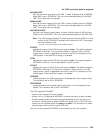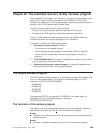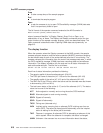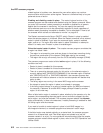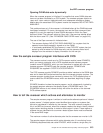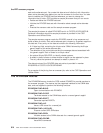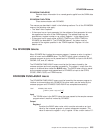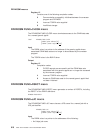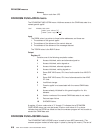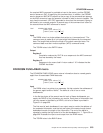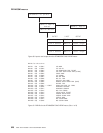Opening CAVM data sets dynamically
When the overseer program is initialized, it is possible that some CAVM data sets
have not yet been formatted by a CICS system. The overseer program obtains an
‘open error’ return code on these data sets, and subsequent attempts to display
details about the associated CICS systems receive the response ‘NO ACTIVE DATA
AVAILABLE’.
This problem arises only if the overseer is initialized before all the CAVM data sets
have been formatted. If it occurs, the operator can use the Open command (see
page 610) to retry the opening of those CAVM data sets on which the Open
previously failed. The overseer retries an Open only if the previous attempt failed
with the return code X'C'. (See “DFHWOSM FUNC=OPEN macro” on page 618.)
The use of the Open command is indicated when:
v The overseer displays ‘NO ACTIVE DATA AVAILABLE’ for a system that the
operator knows has successfully signed on to the CAVM.
v In an already established XRF environment, a new CICS/XRF system has just
started up and formatted its CAVM data sets, and the operator wants future
displays from the overseer to display information for the new job.
How the sample overseer program interfaces with CICS
The overseer service is made up of a CICS overseer module (name DFHWOS),
which you cannot customize, and a CICS-supplied sample overseer program
(module name DFH$AXRO), which you can customize or replace with your own
overseer program. DFHWOS loads the overseer program. DFHWOS and
DFH$AXRO are supplied in CICSTS13.CICS.SDFHAUTH.
The CICS overseer module DFHWOS provides a stable interface to the CAVM data
sets and to those MVS-authorized services that the overseer program requires. The
overseer program invokes those services by means of a CICS-supplied group of
macros called the DFHWOSM macros, which are described, beginning on page
614.
DFHWOS therefore invokes the sample program, and is subsequently invoked by
the sample program whenever the sample issues a DFHWOSM macro. The
DFHWOSM macros do not interact directly with either the active or the alternate
CICS address spaces.
How to tell the overseer which actives and alternates to monitor
The sample overseer program is written to handle active-alternate pairs and “related
system names”. A related system name identifies those regions or systems that
cannot be considered in isolation by the overseer. The most common example of
this is an MRO environment, where the overseer needs to be able to identify related
regions when deciding whether to restart a failed region in place. Those regions or
systems that are identified with a common related system name must be executed
in the same MVS image.
The maximum number of active-alternate pairs that the overseer can monitor is 50.
The sample program discovers which active-alternate pairs it is monitoring from a
VSAM key-sequenced data set called DFHOSD, which contains a single entry for
the XRF overseer program
Chapter 22. The extended recovery facility overseer program 613



